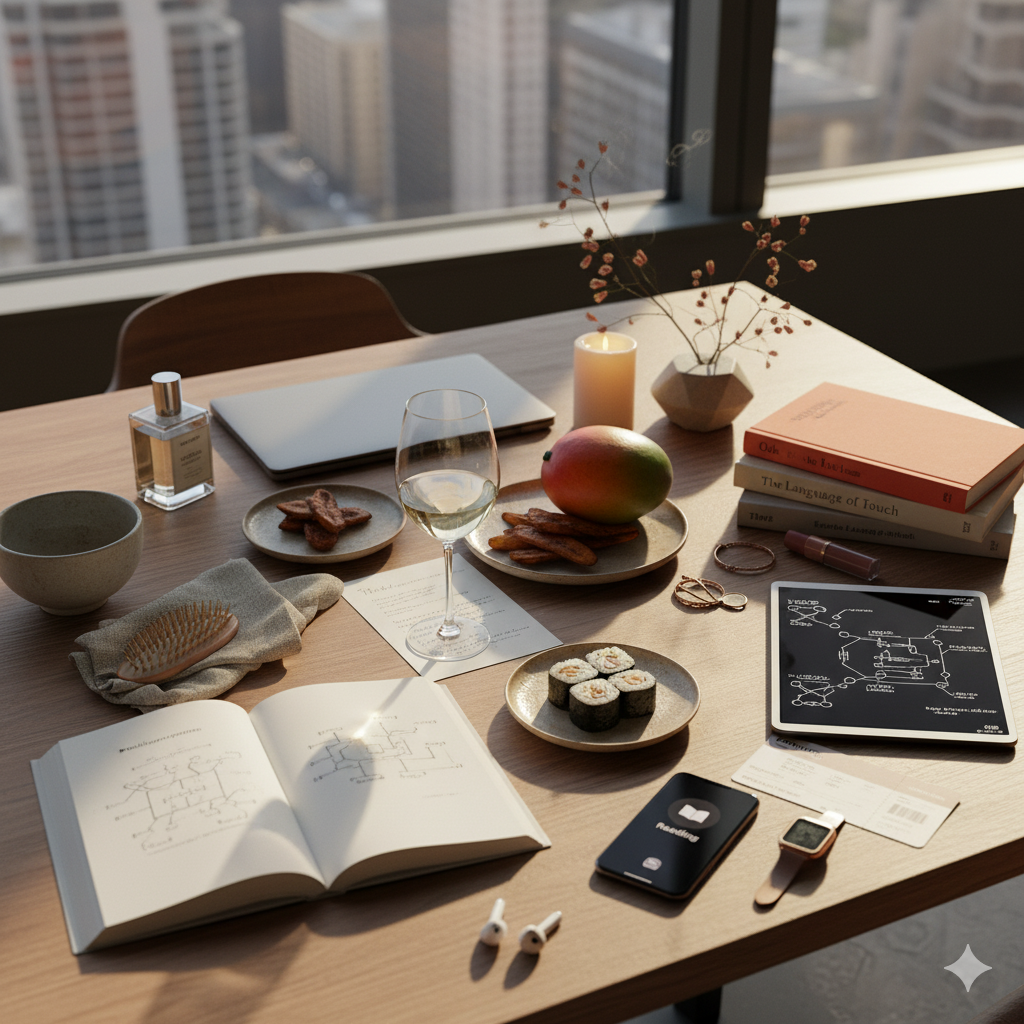
Ode by Muno
Reverse-engineering the thinking behind what you experience
Most of us learn to analyze systems from the outside by mapping connections, tracing cause and effect, describing what’s visible.
But real intelligence begins when you step inside the system by noticing how your choices, what you eat, wear, or design, shape the feedback loops around you.
That’s Systems Intelligence: being both observer and participant.
We all live inside feedback loops between people, spaces, and technology. How we respond shapes how the world responds to us.
That’s the space Ode by Muno explores.
What is Systems Intelligence?
“By Systems Intelligence (SI) we mean intelligent behaviour in the context of complex systems involving interaction and feedback. A subject acting with Systems Intelligence engages successfully and productively with the holistic feedback mechanisms of her environment. She perceives herself as part of a whole, the influence of the whole upon herself as well as her own influence upon the whole. By observing her own interdependence in the feedback intensive environment, she is able to act intelligently.”
— Systems Intelligence by Esa Saarinen and Raimo P. Hämäläinen (2004)
Why 8 Perceptual Systems?
Consider how you know things about the world.
You smell coffee and immediately recall mornings or late nights. You hear a song and your body remembers how to move. You walk into a room and sense, without thinking, whether to stay or leave. They're different perceptual systems for how your body processes information and makes meaning.
Aristotle identified five senses. From an engineering perspective, I recognize three more: space, time, and system. Together, they form eight dimensions through which we perceive reality and through which systems, human or artificial, process information.
[An ode to Sense8, one of the best Netflix shows of all time. Let's just say I've been thinking about this for over a decade.]
The Five Classical Senses:
Taste — how flavor encodes culture, memory, chemistry
Scent — how smell triggers recall and emotion
Touch — how texture signals material reality
Sight — how composition creates meaning and cohesion
Sound — how audio shapes behavior and atmosphere
The Three Engineering Extensions:
Space — how environments structure experience
Time — how sequence creates narrative
System — how patterns emerge from interaction
One of my favorite places to think about how all eight systems connect is a restaurant.
When you walk into a well-designed one, notice what happens:
the lighting shapes how you feel before you've even sat down
the space (the ceiling height, the table spacing, the materials) tells you how to act
you hear music, or silence, or the sound of other people's voices, and your own volume adjusts
time slows between courses, even on a fixed tasting menu where the pacing is predetermined
each dish that arrives either aligns with your taste or challenges it
a plate passes your table and the smell alone makes you want to order it
the drink at the next table looks so good you find yourself asking what it is.
All of it are hidden systems that turn something ordinary, like dinner, into an experience you carry with you.
Who am I?
I'm Muno. Researcher. Developer. Planner. Type A. ENTJ. Scorpio. AI optimist. STEAM advocate (that's STEM + art, because the separation never made sense to me).
I studied electrical and computer engineering at UC San Diego + Revelle student (hence, philosophy), then artificial intelligence and innovation at Carnegie Mellon adding cognitive science and design along the way to understand not just how systems work, but how people do.
My work centers on integrating information, testing hypotheses, and uncovering patterns that guide decision-making. I’m drawn to how subjective experience and quantifiable signals inform each other.
That’s what Ode by Muno explores.
Why does this website exist?
Most of my thoughts live scattered across digital folders of varying organizational chaos. Notes on flavor chemistry next to system architectures. Reflections on fragrance beside AI model documentation.
Ode by Muno is their home. A place where ideas, experiences, curiosities can coexist and, hopefully, connect with others who think this way too.
Ideas are treated as experiences. And like experiences, they connect to memory. They can be recalled, searched, and linked; revealing trends over time and how meaning evolves.
Each piece is tagged by how it is primarily perceived (taste, scent, sight, sound, touch, space, time, system), creating a navigable map of attention based on your curiosity.
What does “Ode” mean?
An ode is a poem written to celebrate something: a person, a place, an idea, an experience. It's the act of paying sustained attention and turning that attention into structure.
I'm not writing poetry. But I am writing odes in the broader sense: sustained attention as practice, observation as celebration.
“Ode” is also the prefix of my name (different pronunciation), meaning “name”: Odemuno.
So this space sits at the intersection:
Ode as celebration (what commands your attention)
Ode as identity (how you name yourself through what you notice)
Where self becomes reflection, and reflection becomes self.
How does “Ode by Muno” serve you?
If you’re here, you probably want to expand your perceptual literacy.
You’re in the right place if you’re drawn to:
The thinking behind what you experience
Frameworks for taste, belonging, and attention
The synthesis of market trends, human behavior, and cultural shifts
Language for experiences you’ve felt but couldn’t articulate
Ideas that feel like insider knowledge, made accessible
I value collaboration. If you have ideas, questions, or want to explore working together, please reach out through the contact form.
My hope is that one day, you'll contribute to Ode.
Thank you for being here.
